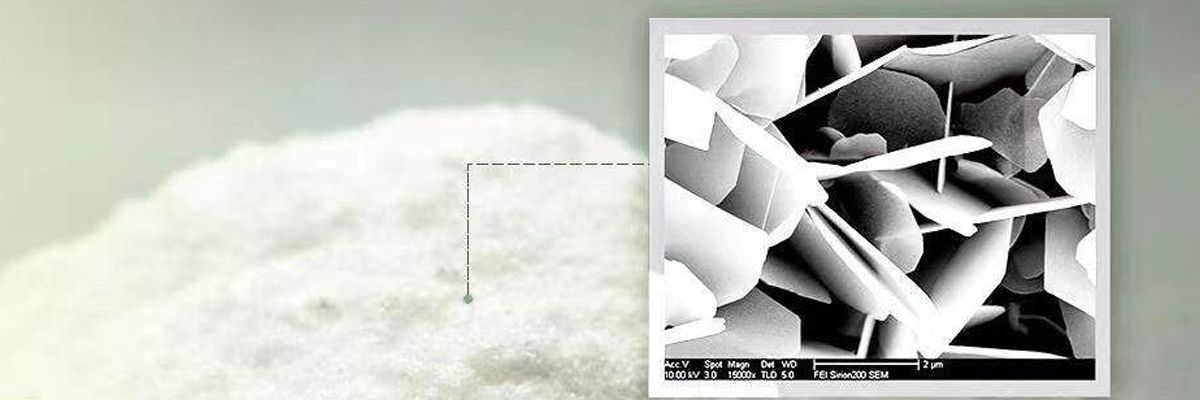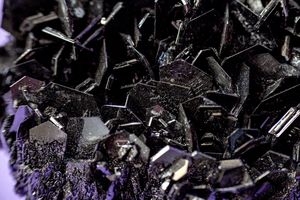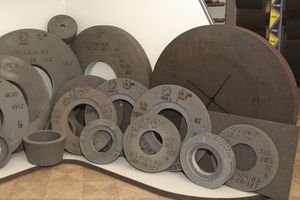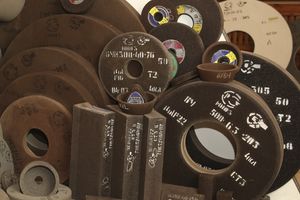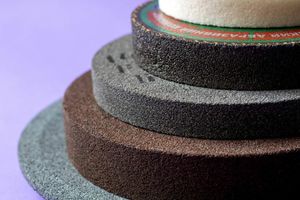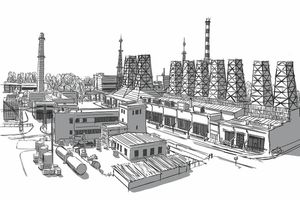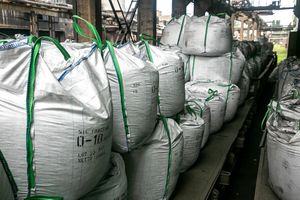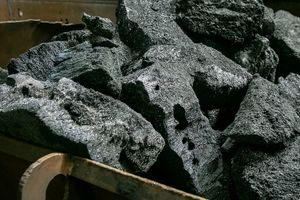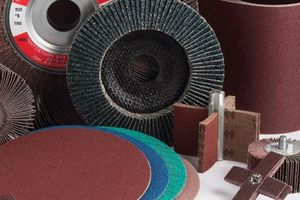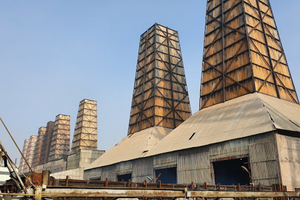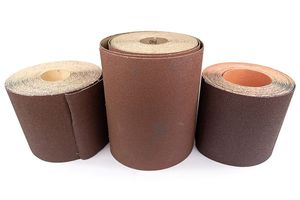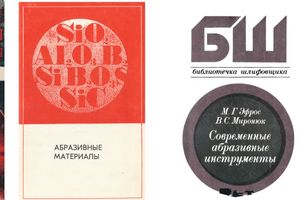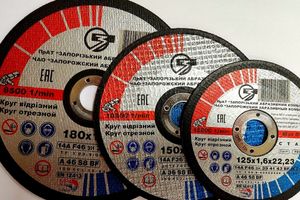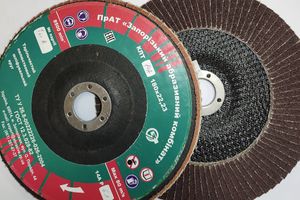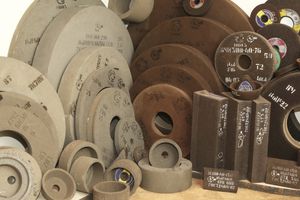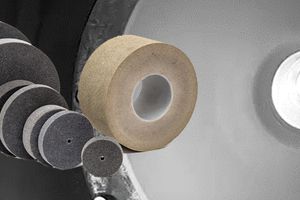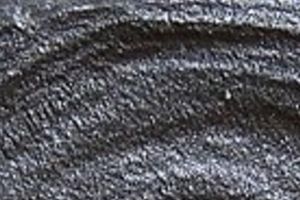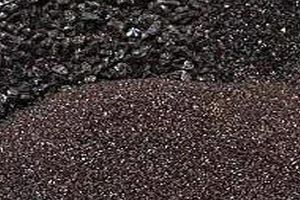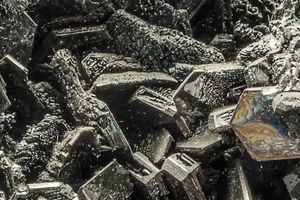Boron nitride is a substance obtained as a result of a binary compound of nitrogen with boron. Thanks to the reaction of two chemical elements, transparent crystals with high-quality abrasive ability are formed. The resulting abrasive crystals are superior to diamond in many respects, which is why today there are many areas where boron nitride is used. Boron nitride is an artificial abrasive with increased hardness, obtained by combining boron with nitrogen in a graphite electric furnace. This abrasive has several types of modifications, which are distinguished by the structure of the crystal lattice.
Structure of the crystal lattice
Hexagonal (a)
- White graphite, similar to talc.
- It has a graphite-like crystalline structure.
- Melting point 3000 °C – fireproof.
- Is a semiconductor.
- Used as a solid lubricant for high temperatures.
Cubic (b) - Elbor
- It has a saphalerite-type structure similar to diamond: elbor (borazol, cubonite).
- It is used in heavy engineering, automotive, mining, construction, and is also used for application to surfaces as a fire-resistant coating.
Dense hexagonal (w)
- It has a wurtzite-type structure, similar in properties to lonsdaleite (58% harder than diamond)
- It is used as the main material for the production of polycrystals and blade tools subjected to extreme loads.
Scope of application
This sought-after substance is used in the following cases:
- for the production of tools with cutting and machining properties. This mainly concerns processes that “cook” steel, mill cast iron and improve the external characteristics of other super-hard materials;
- for metal cleaning procedures;
- in the manufacture of equipment designed to operate at high temperatures (insulators, crucibles and other devices);
- in the production of gas-type dielectrics;
- in nuclear reactor rods;
- to accelerate the synthesis reaction of the corresponding organic substance;
- in fire extinguishers;
- to create durable coatings on dishes that are resistant to high temperatures (the well-known Teflon, etc.);
- in the technology of production of materials with fire-resistant properties;
- to create fibers with reinforcing properties;
- in semiconductors;
- in the process of producing gasoline and other petroleum products;
- for the production of particularly durable ceramics for industrial purposes.
Area of use of boron nitride
Boron nitride is a substance obtained as a result of the binary compound of nitrogen with boron. Thanks to the reaction of two chemical elements, transparent crystals with high-quality abrasive ability are formed. The resulting abrasive crystals are superior to diamond in many ways, which is why today there are many areas where boron nitride is used.
Main applications of boron nitride
In modern industry, boron nitride crystals and products obtained on the basis of a two-component substance occupy one of the leading positions among important instrumental raw materials. Unique chemical and physical properties have become the basis for numerous studies and the production of modern innovative technologies.
The main features of two-component boron nitride with a crystal lattice are:
high thermal conductivity;
good dispersion;
high density boron nitride.
Due to the characteristics of the two-component substance, dozens of industrial organizations working in different directions resort to the use of boron nitride. Colorless abrasive crystals are used for:
The production of oil, which is processed in special installations for the further production of gasoline and other derivatives.
Manufacturing of equipment operating at high temperatures.
Applying a specialized coating with boron nitride to metal surfaces.
Research and production processes in nuclear energy.
Production of coatings with non-stick and anti-corrosion properties.
Production of ceramic products and tableware.
Production processes in the aluminum industry and a number of other tasks.
Using high thermal conductivity boron nitride
Colorless two-component crystals are used to obtain materials with a high degree of fire resistance. As a result of adding boron nitride to the composition of such substances, materials are obtained that exhibit dielectric and semiconductor properties.
The production of boron nitride by the carbothermic method ensures that the substance is used to obtain raw materials with high hardness values. In addition, colorless crystals obtained by the carbothermic method are used in the manufacture of high-temperature, fire-resistant, electrical insulating materials and solid lubricants. The latter, when applied to a material, gives its structure increased resistance to various external influences.
The heat capacity of boron nitride, obtained by hexagonal transformation, allows the substance to be used in the form of thermal protection. Electrical insulating products with induction and similar types of heating require additional thermal protection. In this case, boron nitride is used as the basis of materials to provide thermal protection. Such materials based on boron nitride are characterized by high resistance to aggressive chemical attack.
Due to the thermal conductivity of the crystalline substance, boron nitride can simultaneously act as a thermal and electrical insulator. This ability of a two-component element made the substance unique among those that can be used in the production of numerous electronic devices for special purposes.
Application of high density and hardness boron nitride
The two-component substance is also widely used in the production of specialized lubricants. Due to the oxidation state of boron nitride, the crystals form a separable medium when interacting with various metals, ceramics or glass. Due to this interaction, superhard raw materials are formed.
The resulting superhard raw material acts as the main material for the production of blade tools, the operation of which occurs under conditions of severe shock loads with polycrystals. When such raw materials are applied to products made from graphite, their characteristic properties and degree of resistance to various external influences increase significantly.
Also, a superhard substance based on boron nitride is used to obtain specialized compositions that are characterized by plasticity and ease of mass formation. Also, such compositions are endowed with ultra-high anti-adhesion properties, which is why they are widely used in the repair of metal pipelines, furnace installations, and other things.
Due to the unique properties and low-hazard hazard class of boron nitride, the two-component substance is widely used in almost all areas of human activity.
Boron nitride is a compound of boron and nitrogen, obtained in a graphite furnace using a special technology. The substance exists in several modifications and states, which differ in the structure of the crystal lattice. For example, crystallized is a high-strength composite that surpasses even diamond in hardness. In cubic form it is an abrasive. Hexagonal boron nitride is called white graphite. Ceramic products of special strength are made from it.
Features of hexagonal boron nitride
The hexagonal modification has several features:
has a white color, which provides wide application possibilities in various fields;
the crystal structure is similar to graphite;
has high fire resistance. Melting index 3000 degrees. This allows the substance to be used in high-temperature technological processes;
high thermal conductivity allows the substance to be used in areas where local removal of excess heat is necessary;
almost invisible thermal expansion;
is a semiconductor, which allows the substance to be used in electrical circuits and devices;
can be used as a solid lubricant when used at high temperatures;
has a very low coefficient of friction, which allows the substance to be used in mechanisms where this indicator is critical;
The cubic modification of the substance is used in the engineering, construction, and mining industries. Widely used as a fire-resistant layer, as well as for coating elements used to process solids. The melting point of this substance is slightly lower than that of the hexagonal one. It is 600 degrees. When it is reached, the substance loses some properties.
Hexagonal modification is used for the manufacture of cutting elements that are subject to severe loads. It is also used to produce ceramics that can withstand high temperatures, anti-corrosion coatings, and lubricants.
Benefits of Boron Nitride
Boron nitride has several advantages, thanks to which it is so widely used in various industries:
non-toxic. This allows you to work without the use of special face or respiratory protection. Also, this property allows the use of products made from the substance in various fields, including in everyday life;
chemical inertness. The substance reacts weakly, which makes coatings made from it or objects made from it universal in use;
when using boron nitride as a coating, it is possible to give any item high heat resistance;
high density and durability;
stability. The material is resistant to various types of impacts;
Possibility of use in various fractional states, which allows expanding the scope of application of the substance.
Production of ceramics using hexagonal boron nitride
The hexagonal modification of boron nitride is manufactured taking into account specifications, therefore it has distinctive features depending on the composition. Ceramic products are widely used in aircraft construction, glass, chemical, and energy industrial fields. Boron nitride is used to make electric vacuum devices, insulators, crucibles and much more. Also, the substance in dry, finely dispersed form is added to oils and greases as an anti-friction additive, and to liquids as a lubricating component.
Boron nitride is a unique substance. It is quite common, not expensive, and highly durable. In terms of strength characteristics, some compounds are superior to diamond, which helps reduce the cost of some production processes. The widespread use of the substance has made it quite in demand on the market.
